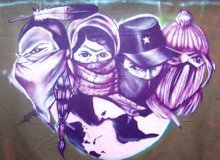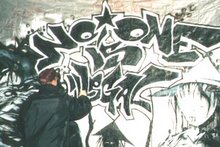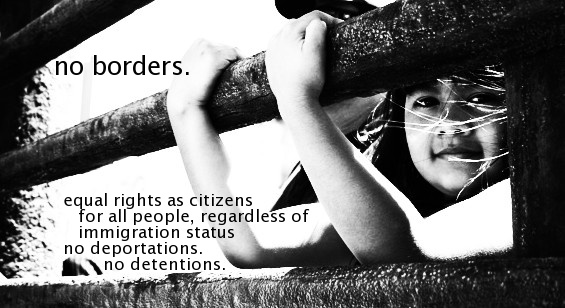The U.S. Has a History of Using Torture by Alfred W. McCoy December 18, 2006
In April 2004, Americans were stunned when CBS broadcast those now-notorious photographs from Iraq's Abu Ghraib prison, showing hooded Iraqis stripped naked while U.S. soldiers stood by smiling. As this scandal grabbed headlines around the globe, Defense Secretary Donald Rumsfeld insisted that the abuses were "perpetrated by a small number of U.S. military," whom New York Times' columnist William Safire soon branded "creeps" -- a line that few in the press had reason to challenge.
When I looked at these photos, I did not see snapshots of simple brutality or a breakdown in military discipline. After more than a decade of studying the Philippine military's torture techniques for a monograph published by Yale back 1999, I could see the tell-tale signs of the CIA's psychological methods. For example, that iconic photo of a hooded Iraqi with fake electrical wires hanging from his extended arms shows, not the sadism of a few "creeps," but instead the two key trademark's of the CIA's psychological torture. The hood was for sensory disorientation. The arms were extended for self-inflicted pain. It was that simple; it was that obvious.
After making that argument in an op-ed for the Boston Globe two weeks after CBS published the photos, I began exploring the historical continuity, the connections, between the CIA torture research back in the 1950s and Abu Ghraib in 2004. By using the past to interrogate the present, I published a book titled A Question of Torture last January that tracks the trail of an extraordinary historical and institutional continuity through countless pages of declassified documents. The findings are disturbing and bear directly upon the ongoing bitter debate over torture that culminated in the enactment of the Military Commissions law just last October.
(Click to Read More)
skip to main |
skip to sidebar







Vancouver - Occupied Coast Salish Territories noii-van@resist.ca / 604-682-3269 ext.7149 www.nooneisillegal.org

Blog Archive
-
▼
2006
(88)
-
▼
December
(88)
- 100,000 Iraqis Flee Their Homes In The Last Month
- Saddam At The End Of A Rope
- The War on Terror Hits Africa
- Harbor Them! Defend Illegal Immigrants
- In Gaza: Democracy And Its Discontents
- Re-Talibanization of Afghanistan
- TATA out of Singur
- Egypt: Workers Revolt
- CALL TO ACTION: January 11th, 2007 International D...
- Insecurity and Poverty In Iraq Put Pregnant Women ...
- Uncle and a 3-Year-Old Will Lead Protests Against ...
- The metropolitan left and the Muslim world
- 6000+ migrants dead journeying to Canary Islands
- Statement on UN Sanctions against Iran
- Gateway to the Next Mexican Revolution
- When Iraqis Gave Up on Government
- Haitian activist detained in Windsor
- U.S. Applies Afghan War Tactics On Mexican Border
- Ex-Abu Ghraib detainee recounts atrocities committ...
- Update from Six Nations by Mohawk Nation News
- Urgent Action: Denounce UN attacks on Haitian people
- Foreigners in UK face biometric ID cards
- Arroyo/U.S. "Low Intensity" State Terrorism
- India in American Perspective
- Satire: Santa's Immigration Status Questioned
- Bush "Developing Illegal Bioterror Weapons" for Of...
- US Has the Most Prisoners in the World
- Global Horizons: importer of foreign workers
- Palestinian Women Pay Health Toll at Checkpoints
- Investigating AFL-CIO and COSATU
- UN Kills Haitians in major assault
- Cuba Labor Conference calls for solidarity with im...
- Women's Rights Another Victim of the Iraq Catastrophe
- Walls, Amnesty, and False Choices
- Iraq: Worst Year Of Occupation
- Mexican mother organizes in Sanctuary
- Power Struggle In Saudi Arabia
- Anti-Apartheid Boycott Campaign Against Chapters a...
- Darfur: Bush And Blair Plan No-Fly Zone And Consid...
- Appeal Fifth International Civil Commission on Obs...
- Afghanistan's Drug Catastrophe
- US Migration Sweep Creates Havoc for Workers' Fami...
- Anti-war Christmas tree censored
- Principles and Practices of Anti Oppression
- Iranian Trade Unionist Free
- Chomsky: From Bolivia to Baghdad
- Rounding Up The Usual Immigrants
- Myths and Realities on Lebanon protests
- Mapping Canada in Haiti
- Update: Desert Rock Blockade New Mexico/Arizona
- Border crossing deaths in Europe
- Transcontinental Migrant Justice Day of Action
- US “democracy promoters” and Iranian regime change
- US History of Torture
- Bush Cracks Down on Gitmo Detainees
- Democrats Prepare to Fund Longer Iraq War
- Suicide attempts at Baxter Detention Centre Australia
- Open letter to Tarek Fatah
- You'll get an earful if you oppose Israel
- Six Years of Canada in Haiti
- Deporting Security Certificate Detainee Mahjoub "u...
- US: 1000+ arrested in largest immigration raids
- Race-ing Justice: African Americans and Criminal J...
- The "Other Campaign" and the Left
- Call for Resistance to Iraq War
- Immigrant Worker Struggles in California
- Afghanistan: Bloodiest Field for Slaughtering Huma...
- Free Six Nations Political Prisoner
- Nonprofits and the Looting of New Orleans
- Immigrant Rights in South Africa
- Anti-Israeli Boycott, Divestment, Sanctions Campai...
- Homophobia and Global Justice
- Unions Must Support Immigrant Rights
- Naked Imperialism
- US: Company building border wall hiring "illegal" ...
- Iraq: Abduction of Women on the Rise
- New Tadamon Blogs on Lebanon
- Funding Request to Support Six Nations Land Reclam...
- Canada's Secret Trial Detainees on Hunger Strike
- Homeland Security Banning Mandela
- The Plight of Black Farmers
- Zapatista Call for Solidarity Dec 22 with Oaxaca
- NGO Steering Committee for Human Rights in Human T...
- Beijing to raze 22 migrant villages for Olympics
- Off cellphones can have eavesdropping bug
- Letter from people of New Orleans
- Open Letter to Iranian President
- Majority of Gitmo Detainees Freed in Other Countries
-
▼
December
(88)
Labels
- Afghanistan (21)
- Africa (25)
- Anti-Oppression (15)
- Australia (8)
- Canada (105)
- Corporate Globalization (45)
- East Asia (9)
- Environment and Health (26)
- Europe (25)
- Gender (42)
- GLBTQ (7)
- Haiti (9)
- Immigrant/Refugee/Nonstatus (154)
- Imperialism (51)
- Incarceration (63)
- Indigenous (57)
- Iraq (54)
- Labour (34)
- Latin America (41)
- Media (3)
- Middle East (28)
- Palestine (42)
- Police Brutality (4)
- Poverty (17)
- Racism (58)
- Security (67)
- Somalia (7)
- South Asia (25)
- SPP (2)
- US Abroad (91)
- US Home (160)

About Us
No One is Illegal-Vancouver is a grassroots anti-colonial immigrant/refugee rights community collective with leadership from members of migrant and/or racialized backgrounds.
As a movement for self-determination that challenges the ideology of immigration controls, we are in full confrontation with Canadian border policies; denouncing and taking action to combat racial profiling, detention and deportation, the national security apparatus, law enforcement brutality, and exploitative working conditions of migrants. We stand in solidarity with indigenous struggles against colonization across Turtle Island and also place ourselves within the broader movement for global justice struggling against capitalism, homophobia, occupation, patriarchy, poverty, war, and other systems of oppression and exploitation.





No One Is Illegal - Vancouver
Our educational work involves furthering an anti-imperialist, anti-war, and anticapitalist analysis that links the "War on Terror" abroad to the racist "Fortress North America" at home. We struggle for the right for our communities to maintain their livelihoods and resist war, occupation, and displacement, while building alliances and supporting indigenous sisters and brothers fighting theft of land and displacement.
Our work is carried out through various strategies including public awareness events, direct support work with refugees and undocumented migrants, multilingual community political/legal forums, fighting back through rallies and direct actions, and ongoing campaigns and projects.